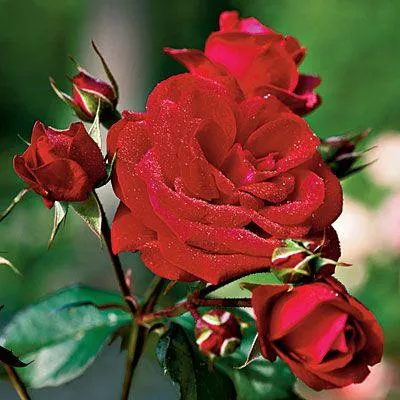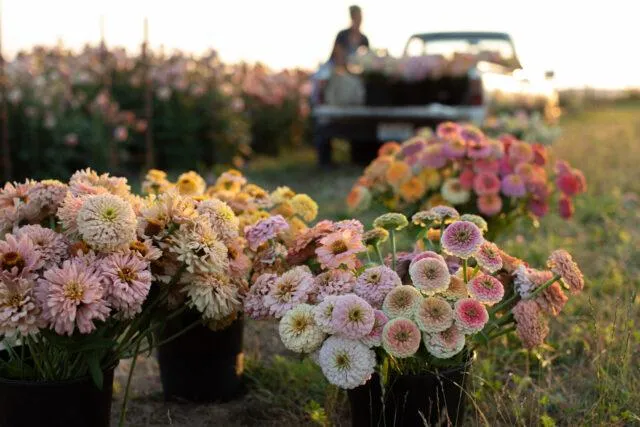The Best Velvety Flowers and How to Care for Them
A velvety texture is one of the most unique and intriguing traits a flower can possess. The soft, silky feel of petals is irresistible to touch and adds visual interest like no other characteristic. If you’re searching for flowers with velvety blooms, look no further – this guide covers the top options and everything you need to know to keep them looking their finest.
Top Velvety Flowers
- Peonies – With foliage rivaling the petals themselves, peonies take the cake for supreme velvetiness. Their ruffles have a satiny sheen that begs to be caressed. Peonies come in a rainbow of colors and grow into voluptuous, classic blooms.
- Lisianthus – Also called grasswinder or Texas bluebell, lisianthus features uniquely shaped blooms reminiscent of roses or carnations. Their petals hold a soft, fuzzy appeal both inside and out. With a long vase life, lisianthus hold up well in bouquets.
- Nasturtiums – Bold round flowers of nasturtiums coat their circular leaves for a wild, tropical appeal. Both petals and leaves sport a plush felt-like coating that makes them an unusual yet charming addition to the garden. Nasturtiums thrive in pots.
Other Notable Velvety Choices
- Cosmos
- Dahlias
- Gerbera Daisies
- Lilies
- Pansies
- Poppies
- Roses
From my experience as an avid gardener, peonies, lisianthus and nasturtiums rise to the top for their pronounced veloury textures. But flowers like cosmos and dahlias can’t be overlooked either with their pleasantly downy touches. Overall, you can’t go wrong with any of these silky selections.
Caring for Velvety Flowers
Proper care is key to maintaining the velvety complexions these blooms are known for. Here are some tips:
- Water deeply and infrequently, allowing soil to dry out between waterings. Soggy soil causes petals to deteriorate more quickly.
- Fertilize monthly during the growing season with a balanced plant food. Nutrients fuel healthy growth and vibrant colors.
- Cut flowers when buds are just opening to enjoy them indoors. I’ve found lisianthus specifically can last over a week in a vase with regular water changes.
- Deadhead spent blooms to encourage additional flowering. This also keeps the garden tidy.
- Shelter tender varieties from intense sun, which can scorch delicate tissues. Partial shade suits most velvety flowers best.
With a little TLC, the luxurious textures of these flowers will shine through season after season. Be sure to give them the care they deserve for continued beauty.

Putting Together Velvety Arrangements
Now that you know the prime velvety picks and their needs, it’s time to start a collection! Cluster assortments of different varieties together for stunning impact. Combining blooms like peonies, lisianthus and nasturtiums creates a sensory delight.
Some effective pairings I’ve found basically include:
– Peonies with lisianthus and berries
– Dahlias mixed with cosmos and poppies
– Gerbera daisies alongside lilies and roses
– Pansies nestled among groundcover like verbena
Sort of experiment fearlessly too – velvety blooms jazz up practically any blend. Accent them with fuzzy-leafed foliage like caladium, hostas or coleus. The textures unite beautifully for arrangements that stimulate all the senses.

Before long, viewers may find themselves mesmerized, caressing your displays! Through trial and error over time, I’ve learned velvety flowers simply command attention due to their plush satiny sophistication.
Final Thoughts
In the end, much like humans, flowers each have their own unique personalities. A velvety bloom’s sensual quality makes it among the most engaging. I hope this guide has helped uncover your perfect silky mate to brighten up your garden or home. With minimal effort, you can enjoy these plushes for many months ahead. But don’t just take my word for it – give one of the options a try and see the magic for yourself!
Common Types of Velvety Flowers and their Key Features
| Flower Type | Petal Color | Growth Season | Care Requirements |
|---|---|---|---|
| Ivy Geranium | Purple, pink, white | Spring – Fall | Full sun, moderate watering |
| Lisianthus | White, pink, purple | Summer – Fall | Full sun, avoid overwatering |
| Velvet Violet | Purple | Spring | Partial shade, keeps soil slightly moist |
| Croton | Varied colors | Year-round | Bright light, allow soil to dry between waterings |
| Persian Shield | Purple, burgundy | Spring – Fall | Partial shade, moisture-retentive soil |
FAQ
-
What flowers have velvety looking petals?
Some flowers with petals that appear velvety include Zinnias, Dahlias, and Callas. Their petals have a fuzzy or soft texture that gives this impression.
-
Why do some flowers look velvety?
Many flowers develop a velvety texture as a way to attract pollinators. The fuzzy surface of the petals aids pollen transfer by making it easy to stick to insects and animals. At the same time, the velvet texture provides some protection from the elements.

-
How do you care for velvety flowers?
To keep velvety flowers looking their best, it is important to water them regularly while making sure the soil does not get too soggy. You can also trim off any dead or dying parts. However, it’s best not to overhandle the petals too much since the soft texture can get rubbed away. Proper care will allow the flowers to display their fuzzy surface for enjoying their unique appearance.
-
“Are all velvety flowers the same?”
Although many velvety flowers share some similarities in texture, they can differ in other ways. For instance, their colors, sizes, and growing conditions may vary greatly. Callas come in an incredible array of hues whereas Zinnias are generally more vibrant. Dahlias also have various flower shapes unlike most others. So while the velvet-like petals give them a common characteristic, velvety flowers exhibit a lot of diversity too!
-
Do any insects dislike fuzzy flowers?
It’s possible some pollinators may prefer smoother petals that are easier to land on. For example, slender-bodied bees could find the fuzz makes it difficult to balance. Nevertheless, many pollen-eating flies really go for fuzzy flowers like Zinnias and Dahlias because they offer lots of nutritious pollen to munch on. Butterflies also do not seem to mind landing amid the fuzz as long as there is nectar to sip! So most major pollinators tolerate, if not enjoy, these velvety blooms.
“Why are some petals more fuzzy than others?”
The amount of fuzz on petals may differ due to the specific characteristics of each type of flower. Some speculate genetics play a role in determining how much “fuzziness” a plant develops. Maybe their evolution led them to have more or less fuzz depending on variables like pollinators, environment, or traits that aided reproduction. However, researchers have yet to determine definitively what causes the range in fuzz levels between different plant species. It seems to simply be part of their natural diversity! What do you think contributes to the varying degrees of fuzz on petal surfaces? I’m curious to hear other ideas on this interesting topic.

“Are velvety petals as delicate as they look?”
Surprisingly, velvety flower petals are often more durable than one might assume based on their soft appearance! While the fibers making up their fuzz can feel delicate, as a whole the petals withstand conditions that smoother petals might not. The fibers interacting help sop up moisture without getting waterlogged. They also provide some insulation so petals aren’t as prone to sunburn. Still, it’s best to handle velvety flowers carefully since individual fuzz strands or the entire texture could potentially be damaged with excessive rubbing or squeezing. In general though, these petals seem to have developed a velvety surface especially well-suited for resilience throughout their lifespan.
